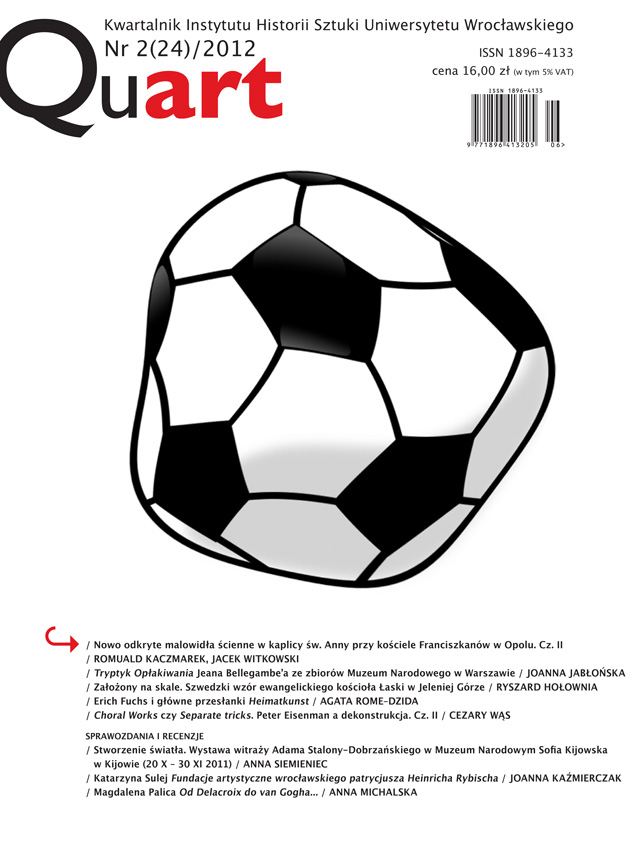Założony na skale. Szwedzki wzór ewangelickiego kościoła Łaski w Jeleniej Górze
Founded on a rock. Swedish model of the Evangelical Church of Grace in Jelenia Góra
Author(s): Ryszard HołowniaSubject(s): Fine Arts / Performing Arts, Architecture, History of Art
Published by: Wydawnictwo Uniwersytetu Wrocławskiego
Summary/Abstract: The Baroque Cross of Christ Church is an artistic phenomenon in Central Europe. The Evangelicals in Jelenia Góra were not granted a permission to raise a church resulting from the Treaty of Altranstädt (1707), only due to the agreement in Wrocław (1709) and after a plenipotent of Swedish king Charles XII, Henning von Stralenheim, spoke a word for them. The edifice (1709–1718, architect Martin Frantz) was supposed to be a replica of the Catharina Church in Stockholm (1656–1695, architect Jean de La Vallée). In Silesia this choice was motivated by religion, art and politics, and its main goal was not a creation of “a monument of gratitude” for Swedish protection. The serfs of a Catholic emperor Joseph I Habsburg evoked a prestiguous model of a programme character. The church in Jelenia Góra referred in form and contents to a leading Lutheran sacral edifice in the capital of Protestant kingdom from the period of the strongest position of Sweden in Europe. Katarina kyrka on the ground of Baroque art used to demonstrate Lutheran confession identity of the society, and sovereignty of the country in the sphere of religion. Following the model was about to supply a specific equivalent of such ideological significance in Silesia in the times of Counter-Reformation. The church situated on the hill in Stockholm was a figure of “a true church” established on the rock (Acts 4, 11–12; 1 Cor 3,11; Ps 31,4; Ps 71, 3–6). The building was a sign of Christ Church built on an excellent fundament of a cross and a state upholding the religion. The meaning of this architecture was related to an integrating and dominant role of Evengelical doctrine of Augsburg Confession in the ideology of royal rule in Sweden. The idea of Christianae Reipublicae Corpus came as the point of reference for the contents of the edifice. Dualism of the architecture reflected dualism of the kingdom specific nature (regnum) – both secular and sacral. The building was an image of the right-believing “Church of Kingdom” – both on Earth and in Heaven. Catharina Church used to have a range of a symbol of the Lutheran monarchy. It was a monument of confessional absolutism. Rethorically expressing, it was “God’s castle in church”. A retrospective approach to style seen in architecture of this building evoked the continuity of power and belief after the Vazas and Charles X Gustav (1654–1660) of the new ruling dynasty took the throne.
Journal: Quart
- Issue Year: 24/2012
- Issue No: 2
- Page Range: 45-78
- Page Count: 34
- Language: Polish

